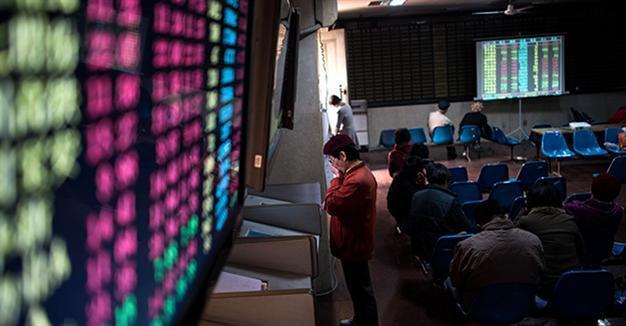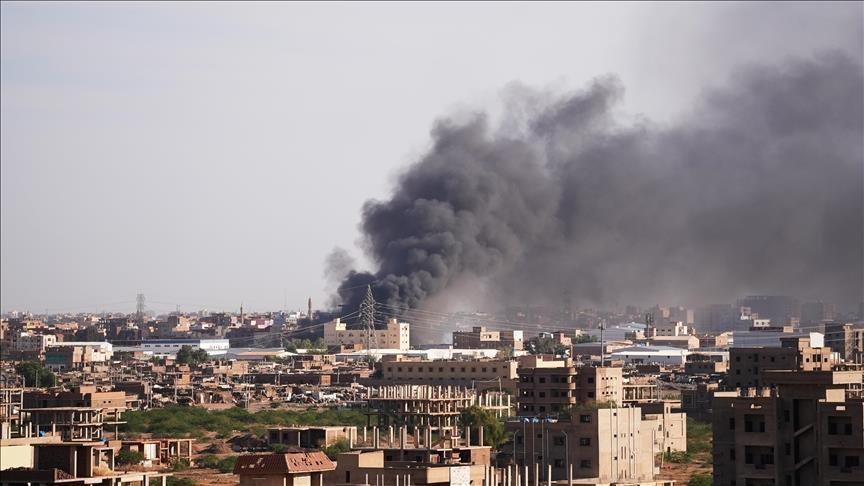China share trading suspended as 7% dive leads Asia sell-off
HONG KONG - Agence France-Presse

AFP Photo
Chinese markets were suspended Jan. 7 for the second day this week after they fell more than seven percent, leading an Asia-wide sell-off as Beijing weakened the value of the yuan currency by the most since August.In a painful echo of the summer rout that wiped trillions of dollars off valuations, mainland investors sold up on fears about the world's number two economy, a key driver of global growth.
The losses mark one of the worst starts to a trading year for decades as nerves are shedded by a perfect storm of weak global growth -- particularly in China -- a slump in oil prices to more than 11-year lows and geopolitical tensions.
Regulators in China called an end to trade within just 30 minutes of opening after the central bank weakened the value of its yuan currency by 0.51 percent against the dollar.
The drop was the biggest since August when the value was cut by five percent in a week -- sparking weeks of global market turmoil over worries Beijing did not have a handle on its economic crisis. The yuan is now at its weakest in five years.
"The Chinese yuan is smack bang at the heart of concerns. For risk assets to stabilise and sentiment to turn around, we are going to need a stable or even positive move in the Chinese currency," Chris Weston, chief market strategist in Melbourne at IG Ltd, told clients, according to Bloomberg News.
Trading was halted just before 10am (0200 GMT) as a "circuit breaker" kicked in after the benchmark Shanghai index slumped seven percent and the Shenzhen composite index, which tracks stocks on China's second exchange, tumbled 8.2 percent.
The stop -- activated when markets fall more than seven percent -- was also triggered on its first day on Jan. 4.
It is based on the CSI 300 index, which tracks the largest 300 stocks on the two exchanges.
Authorities unveiled the circuit breaker as part of efforts to reduce volatility on China's volatile exchanges following the summer sell-off.
"The use of the circuit breaker is the main reason for the falls as investors panicked after seeing it being triggered on Monday," Phillip Securities' analyst Chen Xingyu told AFP.
Mainland shares saw just mild losses on Jan. 5 and a more than two percent gain on Jan. 6, on government injections of cash, which reports said were being used to buy key companies.
The concerns over China's economy -- which is growing at its slowest pace in a quarter century -- have been exacerbated by worries about the looming expiry on Jan. 8 of a ban on selling by certain investors.
But on Jan. 7 the restrictions, also brought in during the summer, were extended indefinitely with some tweaks, including a requirement to disclose planned sales 15 trading days in advance.
The carnage in China has seeped through to global markets this week and Asian trading floors continued to see red. Hong Kong slumped three percent in the afternoon and while Tokyo shed 2.2 percent by the close.
Sydney -- where several firms with trade links to China are listed -- lost 2.2 percent and Seoul was 1.1 percent off. There were also big losses in Singapore, Taipei and Manila.
That followed more big losses across US and European bourses.
Energy firms were among the worst hit after Brent oil prices fell six percent to their lowest finish since July 2004. The US benchmark West Texas Intermediate sank 5.6 percent to hit its weakest close since December 2008.
On Jan. 7 in Asia both contracts fell another four percent to below $33, with China's weakness also playing a key role.
The falls came after the US Department of Energy said stockpiles of gasoline and distillates, including diesel and heating fuel, had surged. The figures fed worries about a global supply glut and weak demand that has sent prices slumping more than 60 percent since mid-2014.
On currency markets, a rush to safe investments hit emerging currencies, while the dollar fell below 118.00 yen for the first time since August.
















